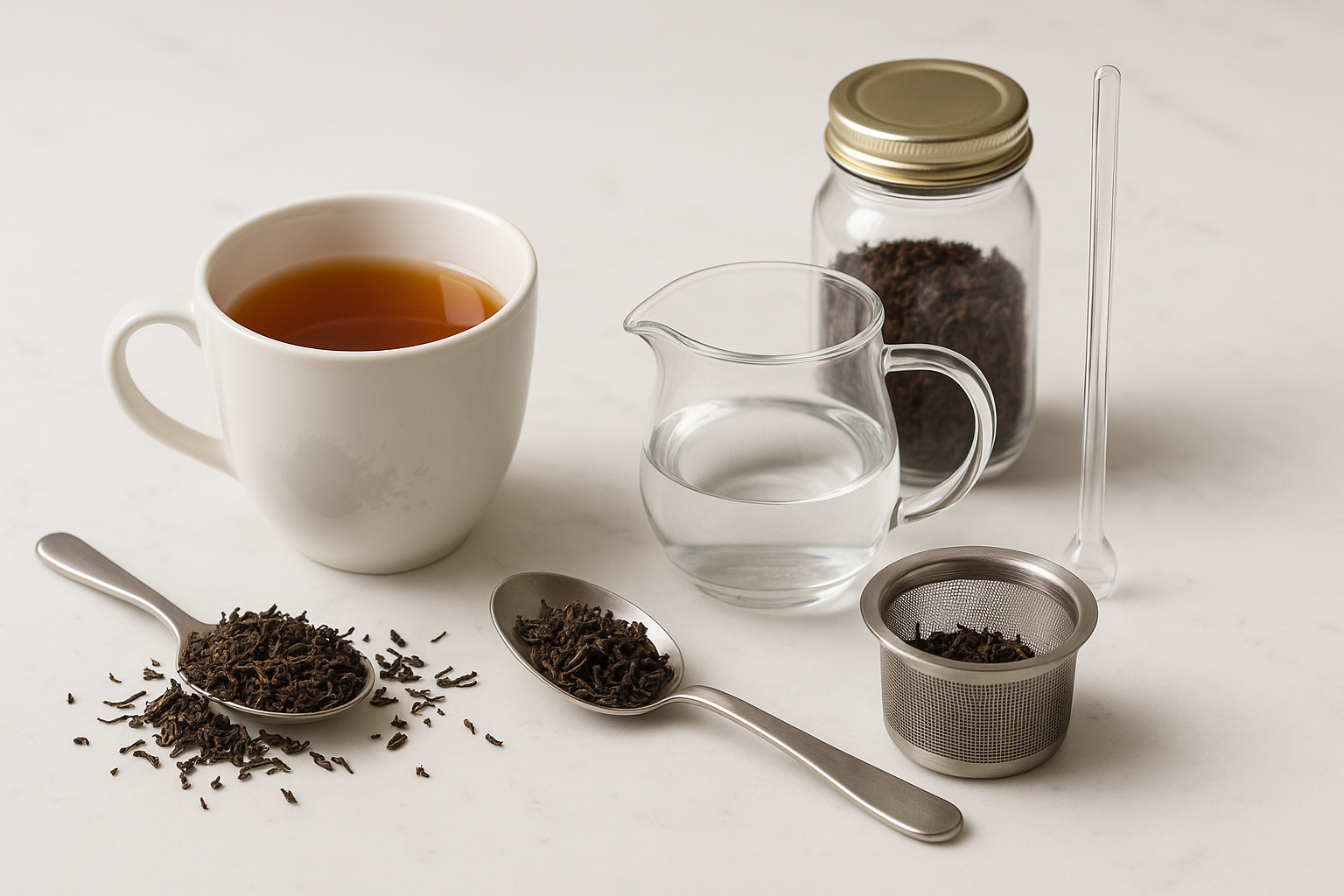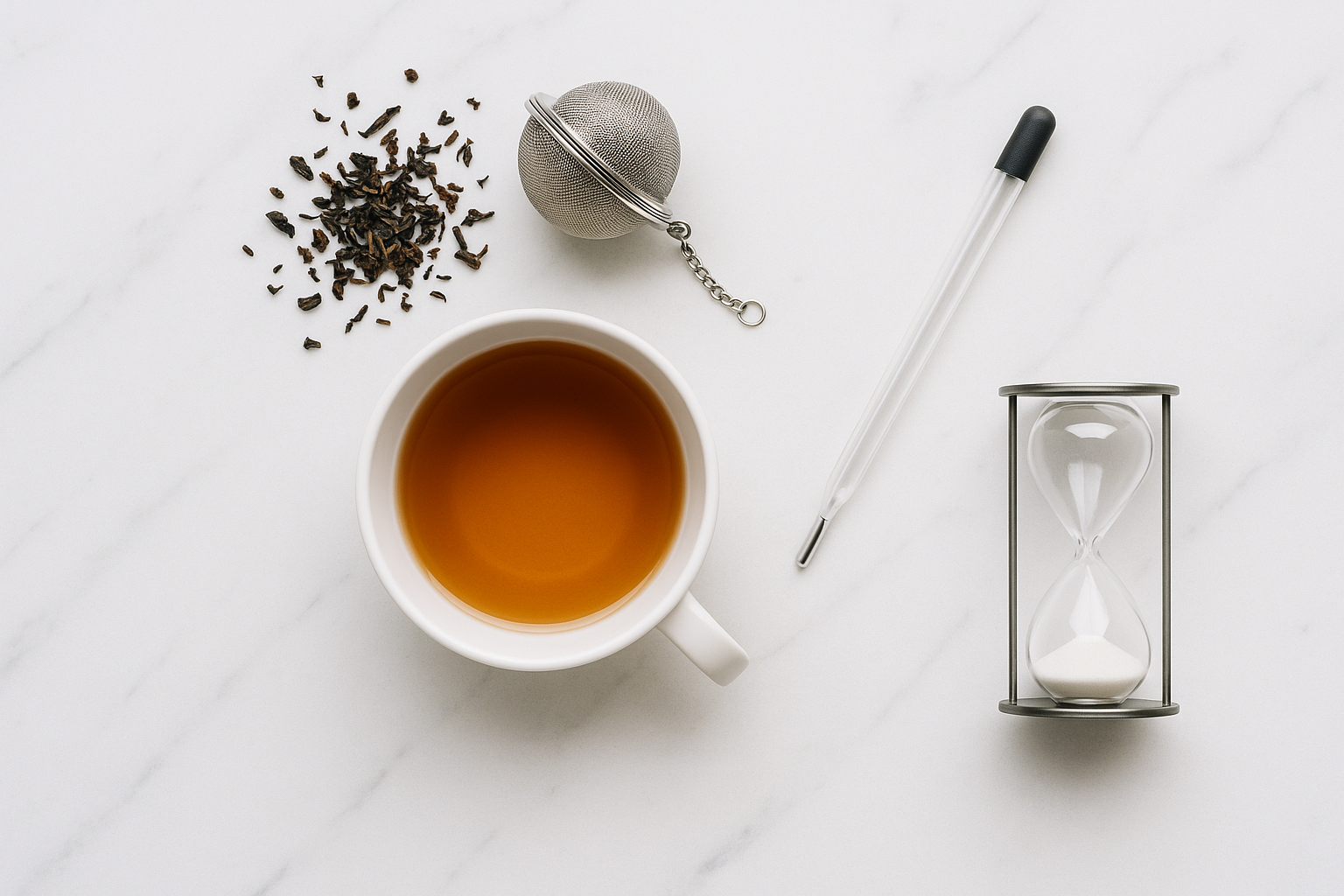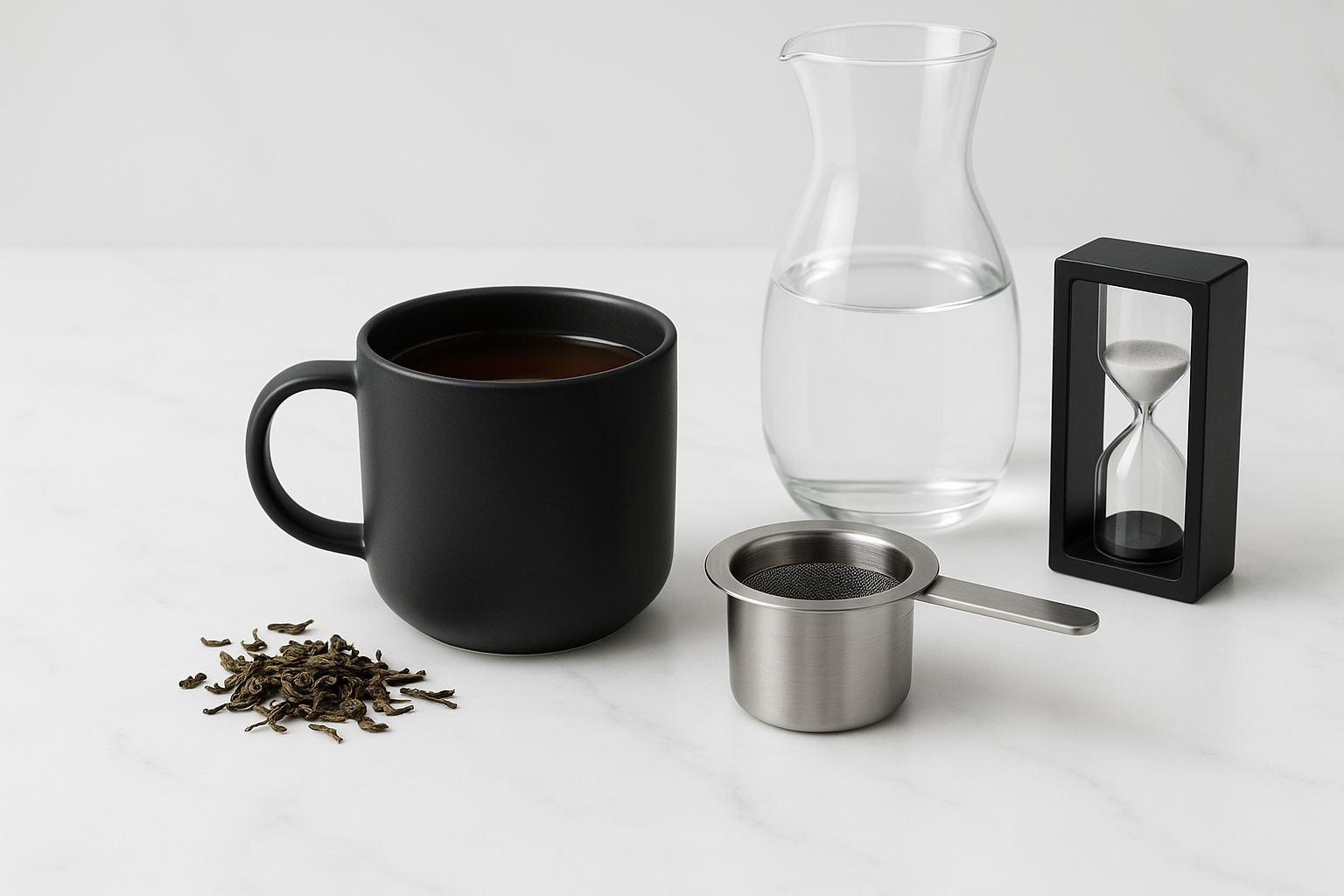
My Loose Leaf Tea Tastes Weak and Watery: 5 Strength-Boosting Fixes
You lift the cup with anticipation, expecting rich, full-bodied flavor to envelope your senses. Instead, you're met with something that tastes more like faintly tea-scented water. The color looks right, you followed the measurements exactly, yet each sip leaves you searching for the robust character that made you choose loose leaf tea in the first place.
Weak, watery tea isn't just disappointing—it's a waste of good leaves and your precious time. The frustrating part? Most advice tells you to "use more tea or steep longer," but that often leads you straight into bitter territory, trading one problem for another.
Here's what changes everything: there are five specific, scientifically-backed ways to boost your tea's strength and body without crossing into bitterness. Each one addresses a different extraction principle, and each one can transform your next cup from watery disappointment into the full-flavored experience you're craving.
The Science Behind Weak Tea
When tea seems weak, it's because not enough flavor compounds are making it from the leaves into your cup. This happens when extraction is incomplete—either because there's insufficient tea matter, inadequate heat energy, poor leaf-to-water contact, or compromised leaf quality.
Understanding extraction science is the key to building strength without bitterness. While bitter tea comes from over-extracting tannins, weak tea comes from under-extracting everything else. The goal is to increase the good compounds while keeping the harsh ones in check.
The 5 Strength-Boosting Fixes That Actually Work
1. The Double Tea Rule (Not Double Time)
The Problem: Most people instinctively steep longer when tea tastes weak, but extended steeping extracts tannins faster than flavor compounds. You end up with bitter, weak tea—the worst of both worlds.
The Science: Increasing leaf quantity provides more surface area for extraction without requiring longer contact time. More leaves mean more flavor compounds available per unit of time, leading to strength without over-extraction.
The Fix: Double your tea quantity before you touch the timer. If you're using 1 teaspoon per cup, use 2. If you're using 2g per 240ml (8 oz), bump it to 4g. This immediately increases the concentration of flavor compounds without extending extraction time.
Pro Tip: Start with 3-5g of tea per 240ml (8 oz) of water for most loose leaf teas. This might seem like a lot, but it's what professional tasters use for cupping sessions.
2. Temperature: The Gentle Boost
The Problem: Water that's too cool doesn't have enough energy to properly extract flavor compounds, especially from heartier black and oolong teas. Even 5-10°C (10-15°F) below optimal can leave you with thin, lackluster tea.
The Science: Heat provides the energy needed for extraction. Higher temperatures increase the rate at which flavor compounds dissolve into water, building body and depth without necessarily increasing bitterness if timing remains controlled.
The Fix: Increase your water temperature by 5-10°C (10-15°F) from your current brewing temperature:
- Green teas: Try 70-75°C (158-167°F) instead of 60-65°C (140-149°F)
- White teas: Use 80-85°C (176-185°F) instead of 75-80°C (167-176°F)
- Oolong teas: Aim for 90-95°C (194-203°F) instead of 85-90°C (185-194°F)
- Black teas: Use full boiling 95-100°C (203-212°F)
Balance Point: The key is pairing higher temperature with proper timing—don't extend steeping time when you increase heat.
3. The Concentration Method: Less Water, More Impact
The Problem: Using too much water dilutes the flavor compounds that do extract, creating tea that tastes thin even when extraction is adequate.
The Science: Concentration affects perceived strength as much as extraction does. By reducing water volume while maintaining tea quantity, you increase the ratio of dissolved compounds to liquid, creating fuller, more intense flavor.
The Fix: Reduce your water volume by 25-30% while keeping the same amount of tea. If you normally use 240ml (8 oz) of water with 3g of tea, try 180ml (6 oz) of water with the same 3g of tea.
Practical Application: Use a smaller teapot or cup, or simply pour less water over your usual amount of leaves. The result is concentrated flavor that you can dilute to taste if needed.
4. Leaf Expansion: Give Your Tea Room to Breathe
The Problem: Cramped tea leaves can't expand properly, limiting the surface area available for extraction. Tea balls, tiny infusers, and overpacked brewing vessels physically prevent leaves from releasing their full potential.
The Science: Tea leaves can expand to 3-5 times their dry size when properly hydrated. Restricted expansion means reduced extraction surface area, leading to weak, underdeveloped flavor even with adequate time and temperature.
The Fix: Ensure your tea has enough space to expand fully:
- Use larger infusers that allow leaves to move freely
- Try brewing in a teapot and straining afterward
- Choose wide, shallow vessels over narrow, deep ones
- Avoid tightly packed tea balls or small mesh infusers
The Space Test: Your brewing vessel should have enough room that the expanded tea leaves fill no more than half the available space.
5. Tea Quality and Freshness: The Foundation Factor
The Problem: Old, stale, or low-quality tea simply doesn't have enough extractable compounds left to create strong flavor. No amount of technique can compensate for leaves that have lost their potency.
The Science: Tea leaves lose volatile compounds and essential oils over time, especially when exposed to air, light, or moisture. These compounds are responsible for much of tea's aroma and flavor complexity.
The Fix: Evaluate your tea's freshness and quality:
- Check harvest dates: Green and white teas should be within 1-2 years, oolong and black teas within 2-3 years
- Assess aroma: Fresh tea should smell vibrant and distinct when dry
- Look for whole leaves: Broken leaves and dust lose flavor compounds faster
- Proper storage: Keep tea in airtight containers away from light and moisture
Quality Indicators: Good tea should have a strong, pleasant aroma when dry and should expand noticeably when steeped.
Your Weak Tea Diagnostic Guide
| If your tea tastes... | Most likely cause | Strength-boosting fix |
|---|---|---|
| Like flavored water with barely any taste | Too little tea | Double your tea quantity (3-5g per 240ml) |
| Thin and lacking body despite decent flavor | Water temperature too low | Increase temperature by 5-10°C (10-15°F) |
| Watery and diluted | Too much water for amount of tea | Reduce water volume by 25-30% |
| Flat with muted flavors | Restricted leaf expansion | Use larger infuser or brew in teapot |
| Bland and lifeless | Stale or low-quality tea | Replace with fresh, high-quality leaves |
The Professional Approach to Building Strength
Professional tea tasters use a systematic approach when tea lacks strength:
- Start with quantity: Increase tea amount before adjusting anything else
- Fine-tune temperature: Boost heat energy for better extraction
- Optimize concentration: Adjust tea-to-water ratio for intensity
- Check expansion space: Ensure leaves can fully hydrate and expand
- Evaluate source material: Consider tea quality and freshness
This sequence prevents the common mistake of trying to fix weak tea with longer steeping time, which often creates bitter, weak tea instead of strong, balanced tea.
The Strength-Without-Bitterness Method
The key to stronger tea without bitterness lies in understanding that strength comes from quantity and extraction efficiency, not from time. Here's the approach that works:
Increase Input, Not Duration: More tea leaves provide more flavor compounds per unit of time. This builds strength without requiring extended extraction that pulls out harsh tannins.
Optimize Conditions: Higher temperature and proper leaf expansion increase extraction efficiency, allowing you to get more flavor in the same amount of time.
Control Concentration: Adjusting your tea-to-water ratio lets you fine-tune strength to your exact preference.
Making Your Next Cup Count
Weak tea doesn't require guesswork or compromise. By systematically addressing quantity, temperature, concentration, leaf expansion, and tea quality, you can transform watery disappointment into the robust, full-bodied cup you're seeking.
Start with the simplest fix—doubling your tea quantity—and work through the other adjustments as needed. Most people find that increasing tea amount alone solves 70% of weak tea problems. The remaining fixes fine-tune strength to your exact preference.
The Balance We're After
Great tea strikes a balance between strength and smoothness, between boldness and nuance. When your loose leaf tea tastes weak, it's not asking you to compromise with bitterness or settle for disappointment. It's asking you to understand the science of extraction and apply it systematically.
Your tea leaves contain all the flavor compounds you're seeking. The question isn't whether they're there—it's whether you're giving them the right conditions to reach your cup. With proper quantity, temperature, concentration, expansion space, and quality leaves, every cup can deliver the full-bodied satisfaction that made you choose loose leaf tea in the first place.


